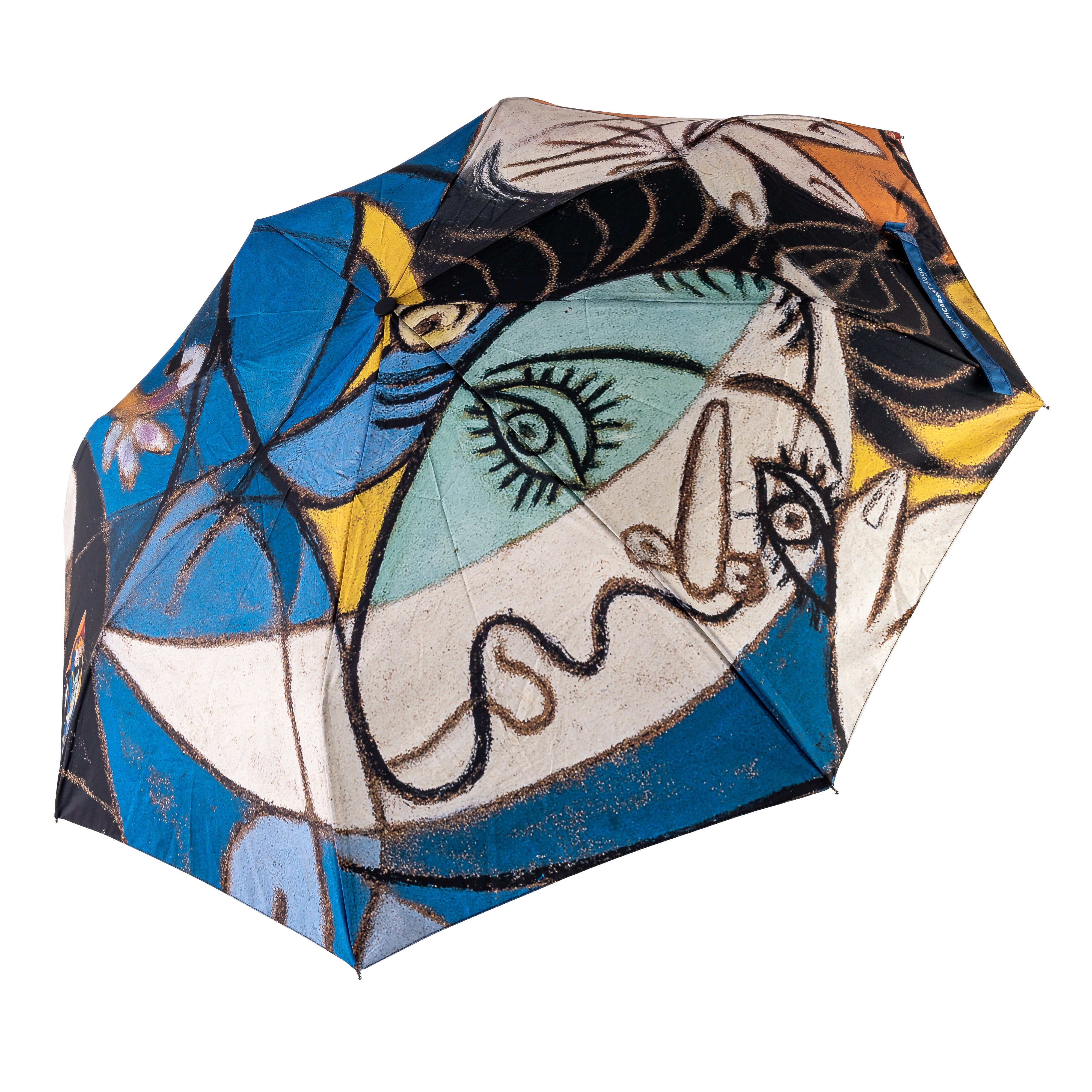‘Woman with Raised Arms was executed in 1936, the year that Picasso embarked on his relationship with Dora Maar, a photographer affiliated with the Surrealist group whom he had met at the beginning of that year in Les Deux Magots café in Paris [1]. In fact, this oil is part of a series of works that register the transition from Marie-Thérèse to Dora. Despite the fact that the physiognomic elements correspond to Dora Maar, the graphic language based on rounded forms continues the Marie-Thérèse Walter period, with the use of black outlines, elliptical fields of colour and warm tones, offering a formal and iconographic echo of various earlier portraits of her. That same year Picasso also produced a large number of portraits of Marie-Thérèse in parallel to his relationship with Dora, a case of a juxtaposition of models that is rarely found in such an overt manner in his work. The face, with its large eyebrows and distinctive chin, and the long nails became iconographic signifiers of his new partner, with whom Picasso maintained a relationship until 1943. Although not dated, this painting would have been executed in late autumn of 1936, as various other similar known works (Z. VIII,306). This one is notable among them for its markedly material nature achieved through the application of sand. Picasso constructed stereotypes based on his partners, and the image of Dora Maar would become the “weeping woman” in the series of preparatory studies for Guernica. In the artist’s words: “For years I’ve painted her in tortured forms, not with sadism, and not with pleasure either; just obeying a vision that forced itself on me. It was a deep reality, not a superficial one” [2]. Like Julio González’s screaming women, Picasso’s iconography of the woman with her arms raised would give rise to the archetypes of the anguished faces of women from the Spanish Civil War. Aside from the use of Dora Maar as a symbol of suffering and anguish, Picasso rapidly detected her depressive personality, as is evident in this work. The years of their relationship were marked from the outset by problems, to the extent that they only lived together for the first year and by 1937 Dora had already moved to another apartment on rue de Savoie next to Picasso’s studio on Rue des Grands-Augustins [3]. Having remained unpublished for many years, this painting was finally put in print by David Douglas Duncan in 1961 in his book Picasso’s Picassos’ [4].
[1] Dora was spending the summer of 1936 in Mougins with Picasso and various members of the Surrealist group, including Man Ray and Paul Éluard, when the Spanish Civil War broke out in July.
[2] VAN HENSBERGEN, Gijs. Guernica: The Biography of a Twentieth-Century Icon. London: Bloomsbury, 2005, p. 146.
[3] Idid.
[4] Eduard Vallès In: LEBRERO, José. Pablo Picasso: New Collection 2017-2020. [Cat. exp. Museo Picasso Málaga, 2017]. Malaga: Museo Picasso Málaga, 2017, p. 248-249.







